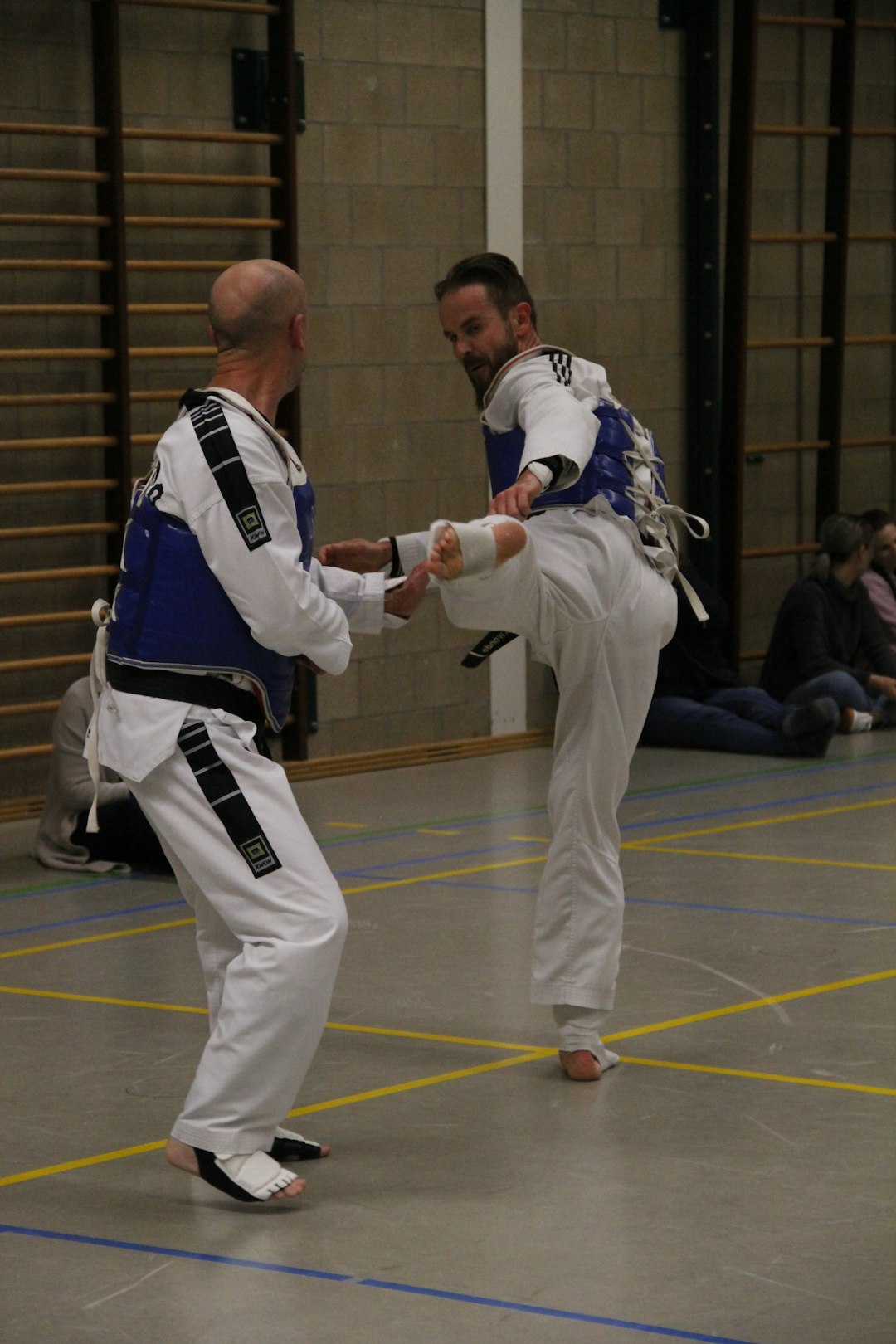To effectively train in karate at home, it's crucial to set up a dedicated space that is free from distractions and has ample room for practicing kata and sparring. The ideal flooring should be smooth and shock-absorbent, like hardwood or rubber mats. Incorporating a full-length mirror aids in form monitoring. Wearing a karate gi enhances mobility and sweat absorption during practice, while optional equipment such as focus mitts and punching bags can improve precision if space allows, with a kick shield or heavy bag being essential for kicking drills. Proper lighting is vital for visibility and safety. A karate outfit, specifically the traditional gi, is recommended for optimal performance and technique, with footwear selection also impacting grip and stance execution. Mastering fundamental stances like cat, horse riding, and fighting stances are key to balance, agility, and effective blocking and striking.
For those without specialized equipment, household items can serve as alternatives for punching practice and stance correction. Shadow boxing is beneficial for form refinement. Makiwara boards or focus mitts provide feedback on strike power and accuracy when available. Regular drills with a consistent routine lead to skill improvements, and tracking progress helps in personal growth within the discipline of karate. Additionally, mastering kata not only refines techniques but also connects you to the tradition and philosophy of karate. Self-defense training adapts drills to simulate real confrontations, enhancing instinctive responses and practical skills.
Maintaining motivation is essential for progress in karate, which can be achieved by setting specific goals related to kata or techniques, using a dedicated training area, and wearing your karate outfit to enhance focus. Recording your practice allows for comparison of techniques over time, showcasing your growth in form, stamina, and understanding, reinforcing motivation and commitment to the discipline.
Embark on a martial arts journey from the comfort of your own home with our comprehensive guide to training Shotokan Karate. This article outlines the essentials for setting up a dedicated training space, the importance of mastering foundational stances and postures, and progressing through advanced techniques such as kata practice and self-defense maneuvers. Whether you’re a beginner or an experienced practitioner, learn how to effectively punch, kick, and block without the need for a dojo. Don your karate outfit and transform your living space into a personal training haven, complete with step-by-step drills tailored to solo practice. Stay motivated and track your progress as you delve deeper into the art of Karate.
- Setting Up Your Home Karate Training Space: Essentials and Layout
- Mastering Basic Stances and Postures for Effective Karate Practice
- Developing Techniques: Punching, Kicking, and Blocking Drills at Home
- Advanced Karate Training: Kata Practice and Self-Defense Maneuvers to Refine
- Staying Motivated and Tracking Progress in Your Karate Journey
Setting Up Your Home Karate Training Space: Essentials and Layout

To effectively train karate at home, setting up a dedicated space is crucial for maintaining focus and ensuring safety. Your home karate training area should be clear of distractions and have ample room for practicing kata and sparring movements. Begin by selecting an area that allows you to move freely, ideally with enough space to perform kicks and blocks without hitting walls or furniture. Once you’ve chosen your spot, consider the flooring; a smooth, even surface like hardwood or rubber mats is preferable to minimize the impact on your joints during training.
In terms of equipment, a mirror is beneficial for checking your stance and form, while a karate outfit called a gi is the traditional attire that offers a range of motion and absorbs perspiration. A focus mitt or punching bag can be used for developing punching power and timing, though they are not essential if space is limited. Ensure you have a sturdy kick shield or a heavy bag for effective kicking practice. Proper lighting is also important to clearly see your movements and posture, as well as to avoid tripping over unseen objects during dynamic exercises. With these essentials in place, your home karate training space will support a comprehensive workout regimen, allowing you to progress in your martial arts journey from the comfort of your own home.
Mastering Basic Stances and Postures for Effective Karate Practice
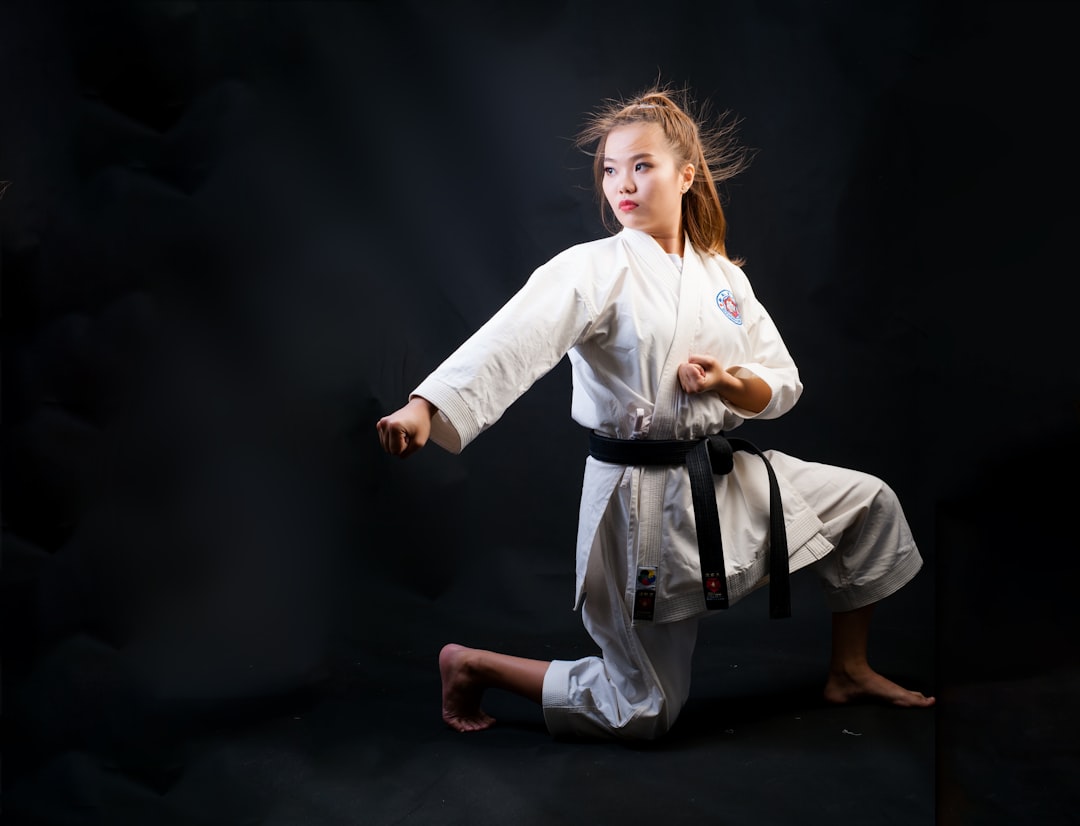
To effectively train karate at home, mastering basic stances and postures is fundamental. These foundational elements are the building blocks of any successful karate practice. The primary stances in karate include the cat stance, horse riding stance, and fighting stance. Each serves a distinct purpose and requires proper form to maximize stability and mobility. For instance, the cat stance promotes balance and agility, while the horse riding stance offers a solid foundation for blocking and striking maneuvers. Incorporating these stances into your routine will enhance your overall performance and technique.
When practicing these stances, it’s crucial to wear appropriate attire that allows for full range of motion without restricting movement. A karate outfit called a gi is the traditional choice, offering both flexibility and durability during practice. Does a comfortable and flexible karate gi contribute to better training? Absolutely. The gi’s lightweight material and design enable practitioners to execute movements with ease, ensuring that their focus remains on perfecting their form rather than feeling constrained by their clothing. Additionally, the correct footwear, if any, is also important; barefoot or specially designed karate shoes can help maintain the proper feel for the floor and facilitate the necessary grip during practice.
Developing Techniques: Punching, Kicking, and Blocking Drills at Home
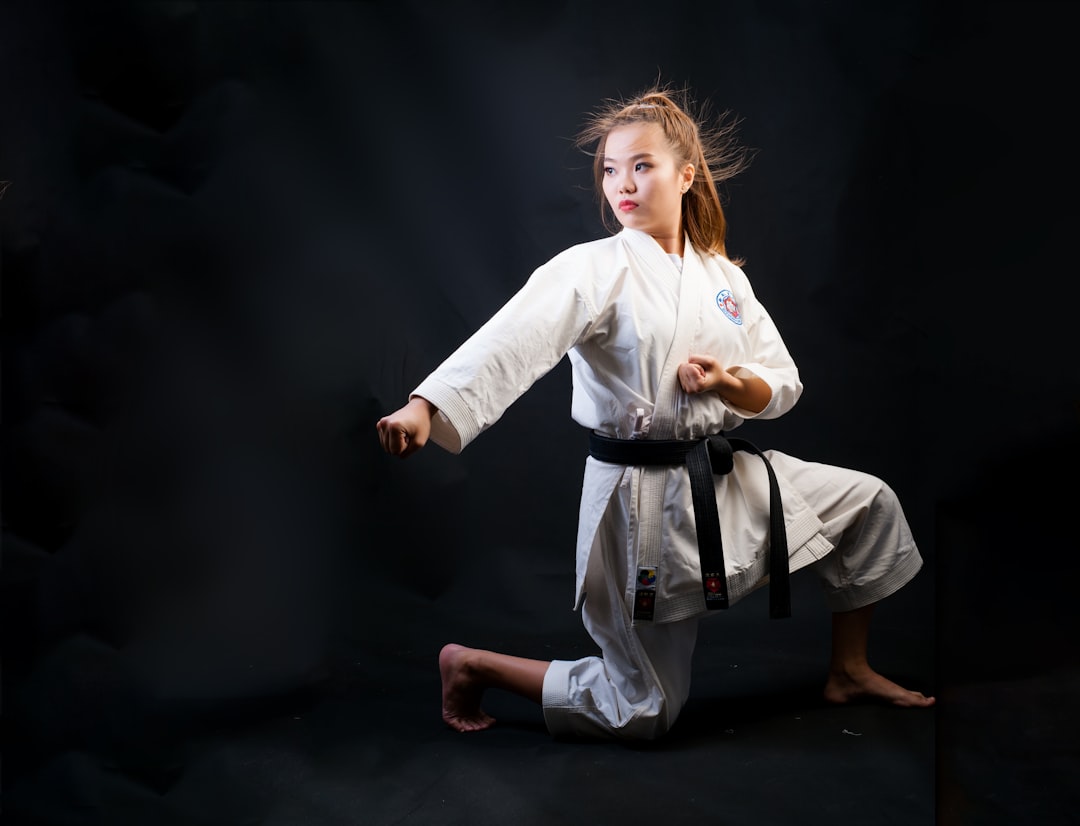
To effectively train karate at home, focusing on developing techniques such as punching, kicking, and blocking is essential for honing your skills. For instance, punching drills can be conducted using a heavy bag or even pillows if equipment isn’t available. You might wonder how to practice punches without a bag; the answer lies in creative use of space and household objects. Shadow boxing is an excellent method to perfect your form and technique, as it allows you to visualize your opponent and execute punches with precision. Kicking drills can be integrated into your routine by practicing various kicks against a wall or while moving across the room. This not only strengthens your legs but also improves coordination and balance. Blocking techniques require careful practice to ensure proper form; positioning yourself in front of a mirror can help you analyze and adjust your stances for effective blocking. Incorporating karate gear like a makiwara or focus mitts held by a partner, if possible, will enhance your training experience, offering immediate feedback on the power and accuracy of your strikes. Remember, consistency is key; regular practice of these drills will lead to measurable improvements in your punching, kicking, and blocking abilities. What’s more, ensuring you have the proper karate outfit, including a gi and appropriate footwear, can make at-home training more comfortable and effective. How can one measure progress without a dojo or sensei? By setting goals for each session, such as increasing the number of repetitions or improving the quality of form, and by recording these achievements, you create a personal path to progress in karate from the comfort of your home environment.
Advanced Karate Training: Kata Practice and Self-Defense Maneuvers to Refine
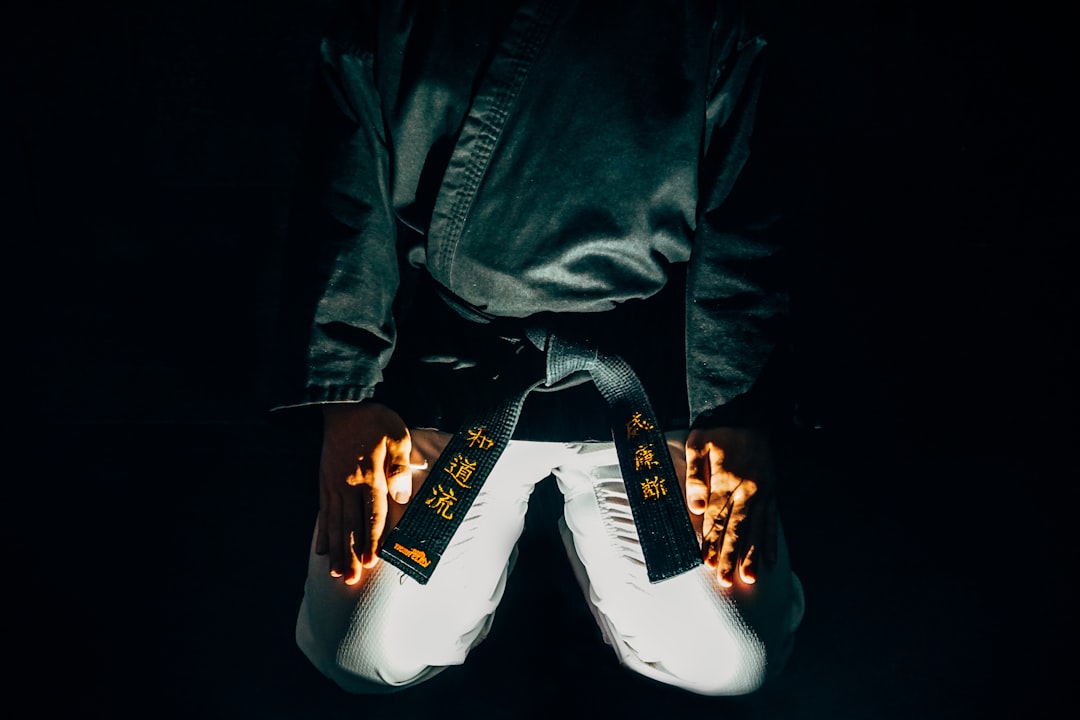
To elevate your karate practice at home to advanced levels, focusing on kata and self-defense maneuvers is essential. Kata, the sequence of movements in karate, are not merely choreographed patterns; they are the essence of karate technique and philosophy, encapsulating centuries of martial arts tradition. Practicing kata allows you to refine your stances, techniques, and understanding of the martial art’s principles. Are you equipped with the proper karate outfit called a gi, which is necessary for executing these movements correctly? A suitable gi not only supports the body but also ensures that your movements are performed in the traditional manner required for kata practice.
Moreover, incorporating self-defense maneuvers into your training regimen is crucial to apply what you learn in a practical context. These maneuvers enhance your skills by simulating real-life situations, teaching you how to react instinctively and effectively to various threats. Can you adapt these maneuvers to the limitations of your home environment? To do so, imagine different scenarios where self-defense becomes necessary and practice your responses, ensuring that your technique is both precise and adaptable. By combining kata practice with realistic self-defense drills, you’ll deepen your understanding of karate and improve your ability to defend yourself in unexpected situations.
Staying Motivated and Tracking Progress in Your Karate Journey
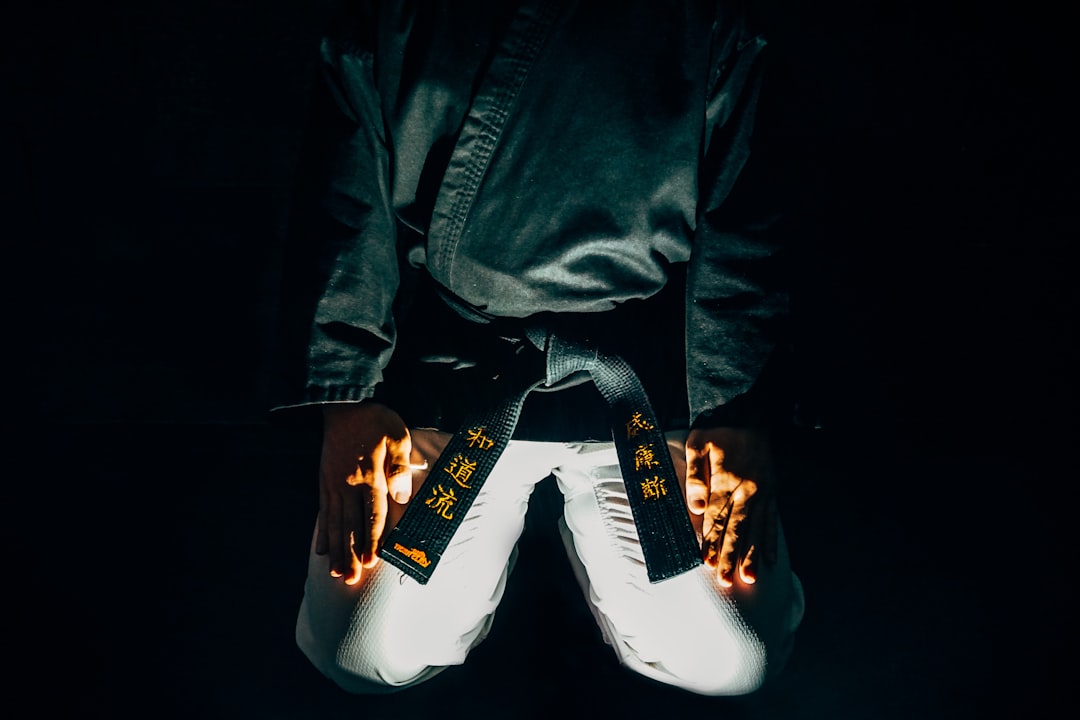
Maintaining motivation while practicing karate at home can be challenging, but it’s a crucial aspect of your journey. To keep your spirits high, set clear and achievable goals for yourself. Ask yourself, “What aspects of karate am I most passionate about?” Whether it’s perfecting a specific kata or mastering a particular technique, focusing on these elements can fuel your drive. Additionally, creating a dedicated training space and donning your karate outfit can psychologically prepare you for practice, reinforcing the separation between everyday life and your martial arts discipline. Celebrate small victories along the way, and consider recording your sessions to track progress objectively. As you witness your improvements over time, your motivation will naturally increase, propelling you further on your karate path.
Tracking progress in your karate journey is essential for measuring improvement and staying motivated. Keep a training diary where you log each session’s activities, durations, and any techniques practiced. Ask yourself, “Am I executing moves with greater precision and control than before?” If the answer is yes, it’s a clear indication of your progress. You can also videotape your practice to visually assess your form and techniques. Over time, you’ll notice changes in your technique, stamina, and understanding of the art. This tangible evidence of advancement will serve as a powerful motivator to continue your home training regimen with dedication and commitment.
Incorporating the essentials of a dedicated home training space, mastering fundamental stances and postures, and advancing through punching, kicking, and blocking drills, one can effectively practice karate at home. As outlined, progressing to kata practice and self-defense maneuvers sharpens skills, while maintaining motivation and tracking advancements keeps the journey dynamic. Investing in a suitable karate outfit, such as a gi, complements the training experience, providing both comfort and the authenticity of traditional practice. By adhering to these guidelines, enthusiasts can transform their living spaces into personal dojos, enabling consistent and focused karate development. Whether beginning or continuing your martial arts journey, remember that discipline, perseverance, and a well-organized routine are key to mastering the art of karate at home.
